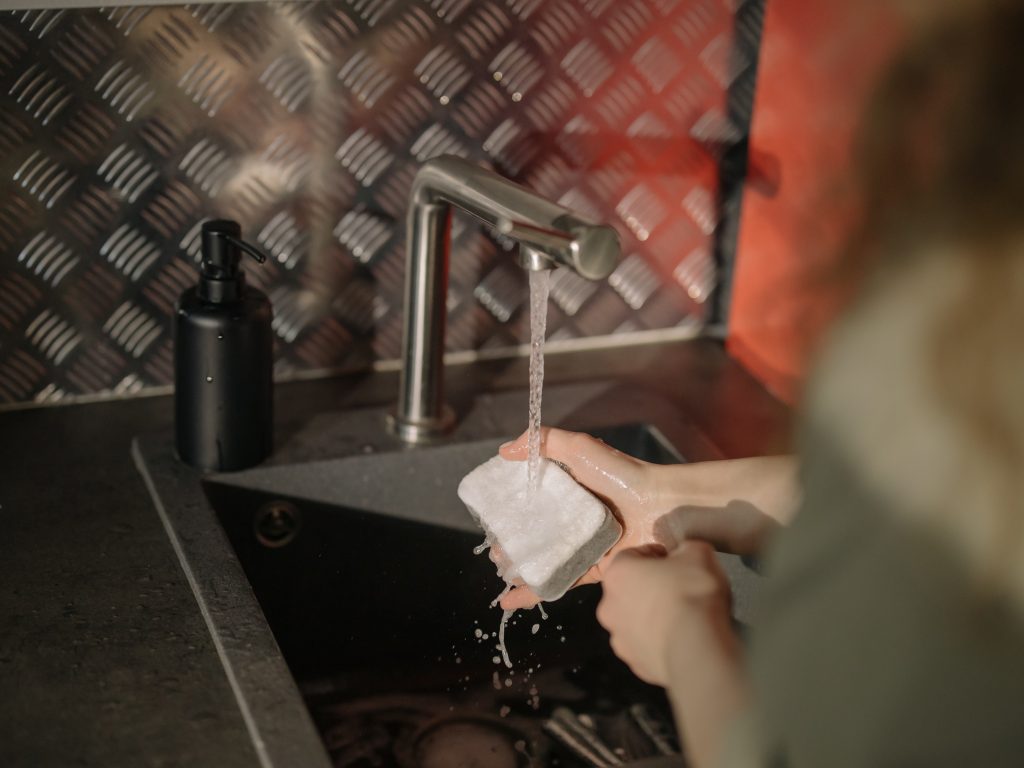
Heading Back: The Clean Edition
Content by Janet Paley, NCIDQ, and Brandi Ball.
Over the last few blog posts, Fox has discussed social distancing and cleaning protocols around returning to the workplace, with implementation suggestions to ensure a safe space for all staff. As employees begin returning to the office in the next few weeks, we wanted to provide the safest space possible, which meant deep cleaning and disinfecting the office. After reviewing cleaning and disinfecting guidance from Federal, State, and County entities…the path forward was daunting. Where does one start? With protocols from different entities, what does it all mean? And more importantly, how does it apply to our people and our space?
Thankfully, we have some experience managing complicated projects. By applying our project management protocols to this task, we outlined a plan and implemented it.

Step One: Research
The first step was to research the various issued suggestions…and there was a lot to review. We started with the experts, the CDC, and used their “Reopening Guidance for Cleaning and Disinfecting Public Spaces, Workplaces, Businesses, Schools, and Homes” as a starting point from which to institute all other cleaning protocols. This helpful link provides a general framework for cleaning and disinfecting a space by:
- Implementing a normal cleaning routine with soap and water.
- Disinfection using EPA-approved disinfectants to reduce the risk of COVID-19 transmission.
- Utilizing alternative disinfectants including diluted bleach or 70% alcohol solutions.
Although the local and state government guidelines should incorporate the CDC’s recommendations, we reviewed the State of Missouri, St. Louis County, and St. Louis City guidelines for reopening to ensure compliance.

Step Two: Identify Challenges
Now that we understand the recommendations, it is necessary to consider any challenges to their implementation. The obvious challenge? Fox is an architecture and interior design firm. That means we have a lot of shared spaces with A LOT of stuff sitting around. Papers for sketching. The resource library with all its product samples. Project plans spread out over tables. How do we properly disinfect these spaces and keep them that way once people return?
Another challenge was obtaining the recommended cleaning supplies. Local vendors are sold out. Industrial vendors are sold out or require bulk orders. Eventually, the proper supplies were procured, but not without significant effort.
Coordination with building management also needed to be determined. What are their protocols? How do they integrate with ours? What is the building cleaning crew responsibilities? What is Fox responsible for maintaining?

Step Three: Develop & Coordinate
With guidance to follow and challenges identified, it is time to develop an action plan.
- Organize the office for cleaning.
- Disinfect the entire office, with attention on shared spaces.
- Keep it clean by instituting cleaning and disinfection protocols.
- Communicate protocols to staff.
While all the steps are important, the fourth is the most critical. Clear and consistent communication with staff throughout provides reassurance and a degree of ownership over the process.

Step Four: Implementation
The final step is to work the plan. Clean. Communication. Clean. Consistency. Clean. Repeat.
- We hired professionals to clean the flooring and sanitize the chairs and tables.
- We held a “morning clean up” to divide and conquer the cleaning and sanitization of desks, tables, countertops, cabinets, etc. We purchased a large quantity of cleaning supplies and followed the CDC guidelines for sanitizing surfaces.
- We took the opportunity to go through the common and storage areas (refrigerator, cabinets, closets) to declutter and reorganize, providing a deep cleaning before replacing all items.
- We also took this opportunity to clean overlooked areas – for instance, we vacuumed out the tops of light fixtures.
There are still a couple of areas to finish, but the deep clean has been a good thing.
While developing and instituting this protocol at first seemed daunting, the experience proved to be easier than we initially imagined, especially when compared to larger organizations. No matter the size of your organization, understand this is a situation where the only constant is change. Flexibility is key.